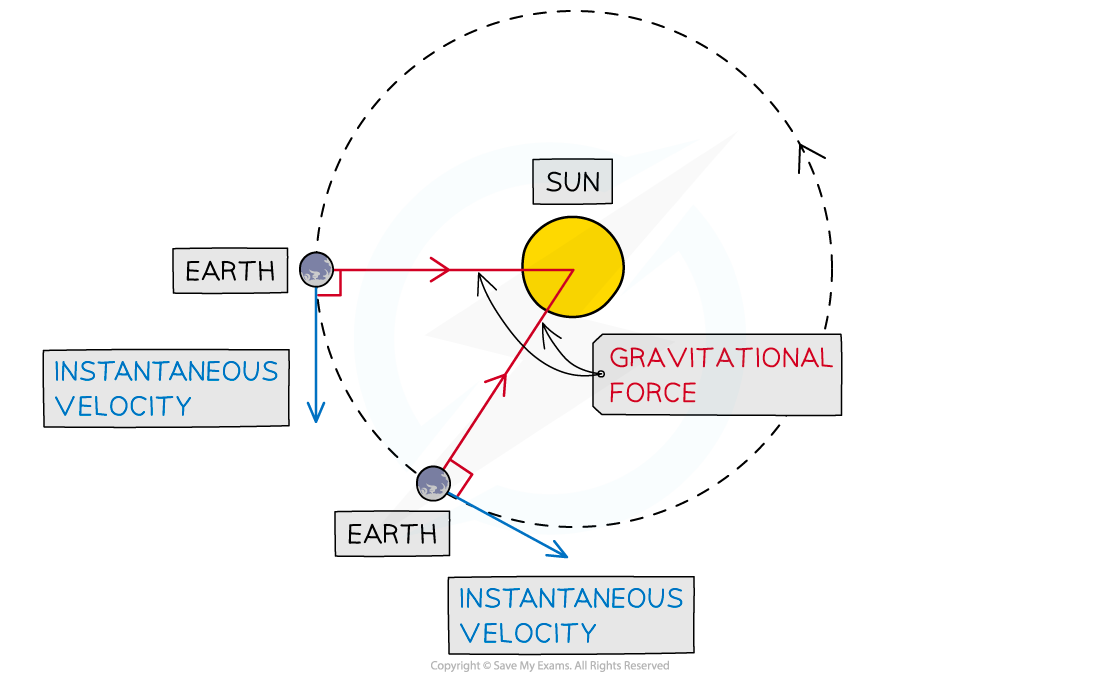Orbital Motion (OCR GCSE Physics A (Gateway)): Revision Note
Exam code: J249
Circular Orbits
Higher Tier Only
Circular Motion in an Orbit
Planets travel around the Sun in orbits that are (approximately) circular
Objects in circular orbit are travelling at a constant speed
The orbit is a circular path, therefore the direction in which the object is travelling will be constantly changing direction
A change in direction causes a change in velocity
Acceleration is the rate of change of velocity, therefore if the object is constantly changing direction then its velocity is constantly changing and so the object in orbit is accelerating
A resultant force is needed to cause an acceleration
This resultant force is gravity and it must act at right angles to the instantaneous velocity of the object to create a circular orbit
This is always towards the centre of the orbit
The instantaneous velocity of the object is the velocity at a given time

The direction of the instantaneous velocity and the gravitational force at different points of the Earth’s orbit around the sun
Examiner Tips and Tricks
When you are describing the motion of an object in orbit make sure you describe the correct terminology. Speed is a scalar quantity, it has a magnitude (size) only. Velocity is a vector quantity, it has both a magnitude (size) and a direction.
Non-Circular Orbits
Higher Tier Only
The most common example of a non-circular orbit is a comet
The orbits of comets are very different to those of planets:
The orbits are highly elliptical (very stretched circles) or hyperbolic
This causes the speed of the comets to change significantly as its distance from the Sun changes
Not all comets orbit in the same plane as the planets and some don’t even orbit in the same direction

Orbital path of a comet
As the comet approaches the Sun, it loses gravitational potential energy and gains kinetic energy
This causes the comet to speed up
This increase in speed causes a slingshot effect, and the body will be flung back out into space again, having passed around the Sun
As it moves away from the Sun the body will slow down, eventually finishing its orbit and falling back into towards the Sun once more
In this way, a stable orbit is formed

Unlock more, it's free!
Did this page help you?